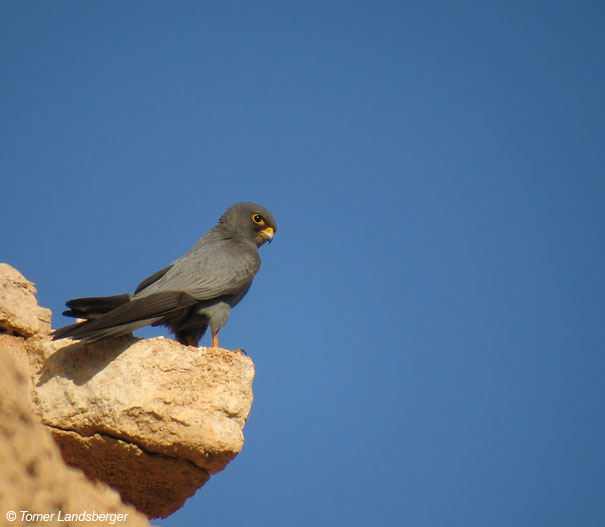
The Eurasian Hobby is a Southern African bird that belongs
to the Falconidae bird family group which includes birds such as Falcons.
The description for the Eurasian Hobby (Latin name Falco subbuteo) can be found in the 7th Edition of the Roberts Birds of Southern Africa.
This bird is known as Hobby Falcon in the Roberts 6th Edition.
There have been no changes in the Latin name for the Eurasian Hobby between the Roberts 6th and Roberts 7th Edition
The Eurasian Hobby is known in Afrikaans as Europese Boomvalk.
The Eurasian Hobby has a height of 36 cms and weighs around 200 gms.
The head is coloured black while the bill is coloured grey.
The Falco subbuteo has a white, black coloured throat, yellow legs and a brown coloured back. The eyes are brown.
Head is black
Eyes are brown
Bill is grey
Legs are yellow
Throat is white, black
Back is brown
Feeding Habits
This bird forages for food on the ground
The Falco subbuteo attacks its prey aerially and feeds on
wing or takes the prey to a secluded venue where it is killed, torn into small pieces and eaten
This bird is a noctunal feeder and is able to forage in the dark because
of the enhanced night vision. It also forages at this time because that?s when the prey comes out in the open.
The Falco subbuteo attacks smaller birds in flight and uses its sharp claws to break the bird's neck. Some of the birds are attacked in their nests while others are killed on the ground. The Eurasian Hobby eats the eggs of its victim.
This bird eats insects such as butterflies, bees, wasps, locusts and ants.
These invertebrates are usually hawked aerially, killed and then eaten .
Breeding, Habitat and Nesting Habits ...
The Eurasian Hobby is a monogamous bird which means that the bird finds and breeds with one partner for the rest of its life. The bird lays between eggs and they are coloured .
The nest is built high up in the tree canopy and is protected from predators by branches and the dense green foligae.
The Eurasian Hobby is mainly found in light and densely wooded forests, where there are Mopane trees.
This bird is very common in most of the Southern African Forests
Seen in Flocks, Singles or Pairs Normally ...
The Eurasian Hobby is mainly seen singly or in pairs in the wild.
It is also seen in flocks

















